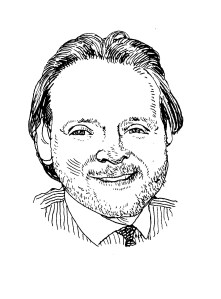The city is considering a substantial rezoning of Midtown East, which could lead to tremendous opportunities for property owners and developers and would be a boom to Gotham’s global competitiveness over the long term. The area being considered for rezoning is bound by 39th Street to the south and 59th Street to the north between Fifth and Third avenues (including the easterly blockfronts on Third).

Over the past several years, the City Planning Commission has done an excellent job of rezoning dozens of areas within the city. These balanced rezonings have consisted of up-zonings and down-zonings.
The up-zonings have occurred around transportation hubs to create higher density development within walking distance to major public transportation systems. Simultaneously, other areas were down-zoned to prevent large-scale development from occurring in areas where people would need to commute by car, causing congestion in those neighborhoods. This planning has been sound and the city should be applauded for these pragmatic changes.
However, much of the legislation that has been proposed by community boards and the City Council will serve to thwart development and encourage more preservation. It is clear that keeping certain aspects of the city intact is admirable but when overreaching occurs, it exerts downward pressure on economic development. This has been done through the creation of an extraordinary number of historic districts and landmark districts and additional hurdles preventing developers from bringing parcels to their highest and best use.
Two major projects, which will have a dramatically positive impact on the city, are the development of the Hudson Yards and the World Trade Center. These two developments will bring much needed new office and residential stock to the marketplace along with substantial retail components.
However, in Midtown Manhattan, the stock of buildings, particularly of office buildings, is decades old. Midtown Manhattan is one of the few places in the country where one can walk down the street and point to an office building constructed in the 1980s and refer to it as a “new building.” In most cities around the country, the 1980s-vintage office building is the “old building” that companies are moving out of.
In Midtown, there are many buildings that are 60, 70 or even 80 years old and there is an overwhelming demand for new office space. If you compare the changes over the past 30 to 40 years in the skyline of Midtown with those of other major world markets, we see that New York is not advancing at the rate major cities around the globe are, which could result in our losing our competitive advantage over the long-term.
New office stock (along with new hotels and apartment buildings) with exciting architecture is an important ingredient for the future growth of the city. Constrained land supply is one of the main reasons we have not seen more development in Manhattan.
To create new development, the city has the ability to provide incentives, at absolutely no cost, through increasing floor-to-area-ratios (FARs) for parcels in Midtown Manhattan. It is important to understand that from the real estate industry’s perspective, the metric that matters most is real estate taxes per square foot, as opposed to the city’s perspective, in which what matters most is real estate tax revenues per tax lot.
As FARs are increased, the city has a tremendous opportunity to increase tax revenue while simultaneously lowering real estate taxes per square foot for these new developments. This is could be a classic win-win scenario and it is heartening to see that the city is considering such a move.
The reason that many obsolete buildings in Midtown are not demolished to make way for new developments is that the cost of existing buildings is very high and the extent to which you can replace an existing 100,000-square-foot building with another 100,000-square-foot building does not create economic feasibility for a developer. If, however, the FAR on that parcel is increased such that 250,000 square feet could replace the 100,000 square foot building, it would create incentives through economic viability for these antiquated buildings to be demolished to make way for modern structures.
The city is considering a plan to increase FARs substantially in Midtown East, which would be an appropriate counterpoint to the many (too many) historic districts that have been created and that have been proposed. It is hoped that this proposal will get serious consideration as it would allow the city to remain competitive on a global basis.
rknakal@masseyknakal.com
Robert Knakal is the chairman and founding partner of Massey Knakal Realty Services and in his career has brokered the sale of more than 1,200 properties, having a market value in excess of $8 billion.


